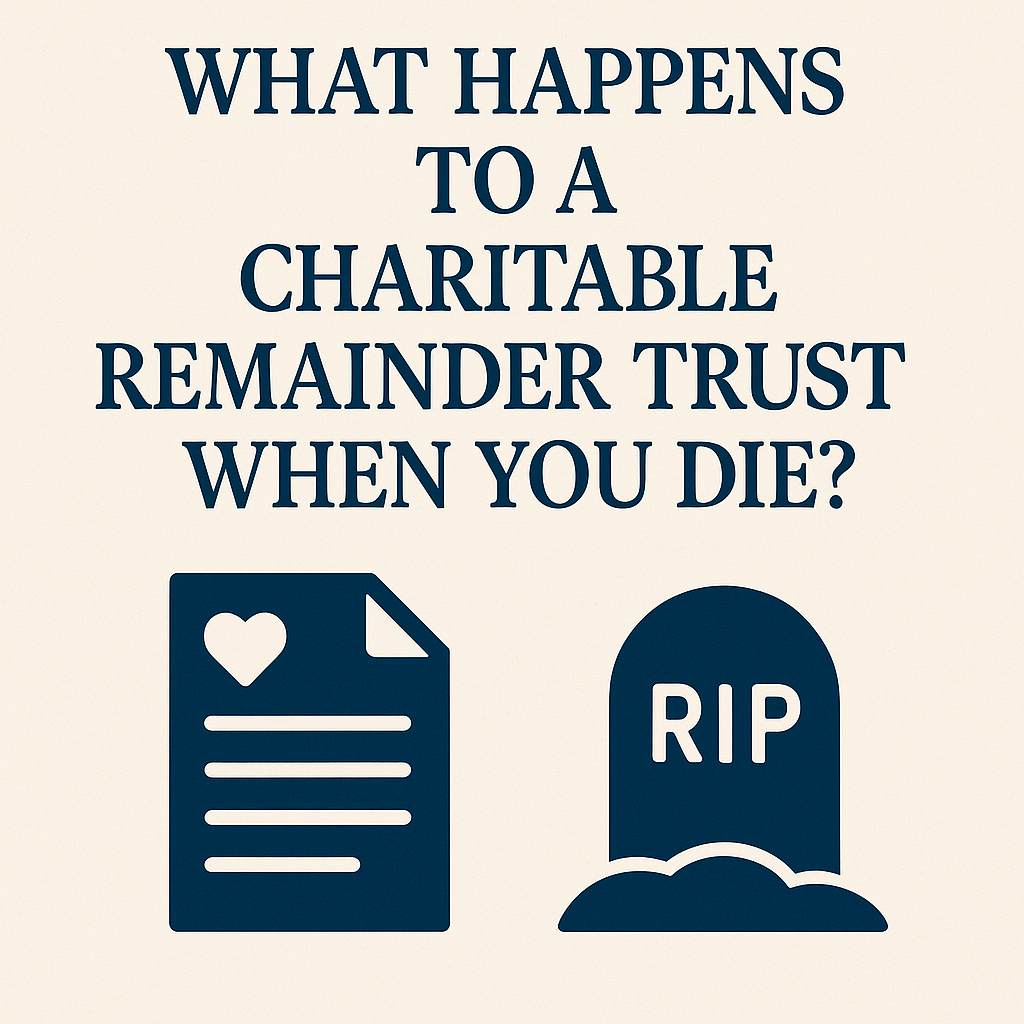A Charitable Remainder Trust (CRT) offers a thoughtful way to turn assets into income during your lifetime while setting up a gift to charity later on. But one of the most common questions people ask is this: what happens to the trust when you pass away?
The short answer is that the trust ends, and the remainder goes to charity. The full picture depends on how the trust was set up and who else is involved. Here’s what you and your family should know.
Quick Refresher: What a CRT Is
A CRT is a split-interest trust. That means it provides income to one or more people for a period of time, and then distributes whatever is left to a charitable organization.
The income stream can last for:
-
Your lifetime
-
The lifetime of another person (such as a spouse or child)
-
A fixed term of up to 20 years
Once that term ends, the remaining funds go to charity.
What Happens When You Die?
If you’re the only income beneficiary, the trust terminates at your death. The remainder goes directly to the charity you named in the trust document. The transfer bypasses probate, avoids delays, and does not require involvement from your will or estate plan.
If someone else is also listed as an income beneficiary — such as a spouse or partner — the trust continues paying income to them until their term ends. Then it terminates and the remainder is distributed to charity.
Who Handles the Final Distribution?
The trustee is responsible for managing the trust, paying out final income, and transferring the remainder to the charitable beneficiary. If a professional trustee is involved, they will take care of all legal and financial logistics. If a family member is the trustee, they may need help from an attorney or accountant to finalize the trust.
What Happens if the Charity No Longer Exists?
This can happen, especially with smaller or newer nonprofits. If the named charity is no longer in operation, the trustee will typically select another charity with a similar mission. Some CRTs are written to give the trustee that flexibility up front. Others include a secondary or backup charity in the trust document, just in case.
If you want to keep flexibility in place for your family, you might consider naming a Donor Advised Fund or a Family Foundation as the beneficiary. That gives your loved ones the ability to recommend grants after you’re gone.
Can the CRT Continue Past My Death?
Yes, if it’s set up with multiple beneficiaries. For example:
-
You and your spouse could receive income for your joint lifetimes
-
A child could be the secondary beneficiary and receive income after you pass
-
The trust could run for a fixed term, such as 20 years, regardless of anyone’s life expectancy
Once all income terms are complete, the trust ends and the remainder is distributed to charity.
Is the Charity Notified?
Yes. When the trust ends, the charity is contacted by the trustee and informed that it is receiving the remainder. The trustee coordinates the distribution, and the charity typically provides a receipt or acknowledgment of the gift for recordkeeping purposes.
Final Thoughts
When a Charitable Remainder Trust ends, its purpose is fulfilled. You’ve received income during your life, and now your chosen cause receives a meaningful gift. It’s one of the few estate tools that works during your lifetime and continues your legacy after you’re gone.
Planning ahead ensures your wishes are carried out smoothly. If you’re considering a CRT or have already set one up, talk with your trustee or advisor to make sure everything is clear and documented.
Key Takeaways
-
A CRT ends when the final income beneficiary dies or the term expires
-
The remaining assets go directly to the charity named in the trust
-
You can involve your family by using a donor advised fund or foundation as the beneficiary
-
If the named charity no longer exists, the trustee selects an alternative
-
The trust bypasses probate and creates a clean transition of assets to charity
If you have feedback, questions, or ideas for future articles or Information Hubs, please contact us. Your insights help us create valuable content.


